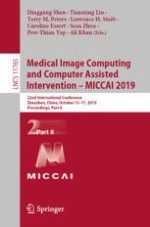2019 | OriginalPaper | Buchkapitel
Radiomics-guided GAN for Segmentation of Liver Tumor Without Contrast Agents
verfasst von : Xiaojiao Xiao, Juanjuan Zhao, Yan Qiang, Jaron Chong, XiaoTang Yang, Ntikurako Guy-Fernand Kazihise, Bo Chen, Shuo Li
Erschienen in: Medical Image Computing and Computer Assisted Intervention – MICCAI 2019
Aktivieren Sie unsere intelligente Suche, um passende Fachinhalte oder Patente zu finden.
Wählen Sie Textabschnitte aus um mit Künstlicher Intelligenz passenden Patente zu finden. powered by
Markieren Sie Textabschnitte, um KI-gestützt weitere passende Inhalte zu finden. powered by
